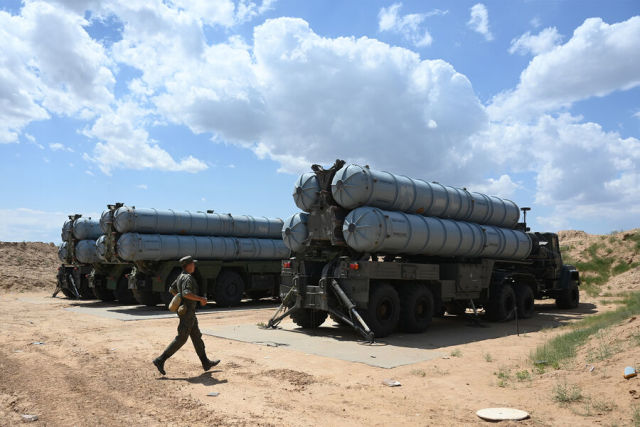The former deputy head of the Air Force, General Bizhev, explained why the S-300PM "Favorite" is needed in Siberia
By the end of 2022, the upgraded S-300PM2 Favorit complexes will be delivered to the air defense of Siberia. They will replace the S-300PT. "Newspaper.Ru" together with military experts, I figured out what these complexes will do in Siberia and why the latest S-400 and S-500 are not being delivered there
The first regiment, armed with S-300PT complexes, took up combat duty in 1979. Subsequent upgrades of this anti-aircraft missile system gave rise to new systems - S-300V and S-300VM "Antey-2500", S-300PMU1, S-300PMU2 "Favorit".
The decision to rearm the 41st Air Defense Division, whose regiments are located in Novosibirsk, Angarsk, Irkutsk region, Abakan and Krasnoyarsk, was made by the Ministry of Defense of the Russian Federation in July 2021.
According to the military department, the rearmament will be completed by the end of 2022.
"It is believed that the air defense ring of Moscow is the most powerful and equipped with modern air defense systems," he told the newspaper.Ru" former head of the Air Force Committee on the CIS Joint Air Defense System, Lieutenant General Aytech Bizhev. - This is true, but if you look at the disposition of anti-aircraft divisions in the Moscow region, they include both the latest S-500 and S-400 systems, and the S-300 in an upgraded version. This is due to the echelon of defense, when some complexes shoot down air targets at a greater distance, others at a closer one. In the immediate vicinity of the protected objects, security is provided by the Pantsir-SM anti-aircraft missile and cannon complexes and other means of close combat."
"Firstly, the Favorit keeps the range of the range of use of any air weapons of a potential enemy at a distance of up to 200 km. Secondly, it is capable of controlling near space and destroying ballistic missiles," he added.
For comparison: the range of the S-500 Prometheus is 600 km, and the S-400 Triumph is up to 300 km.
"The supply of these anti-aircraft systems to the region is fully justified. These are really new complexes, despite their names that have already become familiar. The same S-300PM-2 is the most "advanced" complex of the entire family of "three hundred". They will be replaced by the previous models of the S-300, which are now on duty in Siberia," he explained to the newspaper.Ru" Bizhev.
The General emphasized that the "Favorite" is able to work effectively in conditions of intensive enemy radio interference. The system is capable of shooting down any type of aerial targets: airplanes, ballistic and cruise missiles, as well as drones.
"Previously, this direction was covered from the territory of Kazakhstan within the framework of a unified air defense system. The cooperation agreement between Moscow and Nur-Sultan has been extended, but it has probably been decided to hedge. It should be taken into account that Kazakhstan has a five-year military cooperation agreement with the United States, which expires in 2022 and, most likely, it will also be extended. It is likely that this is the reason for the accelerated rearmament of Russian air defense systems in the region of Eastern Siberia. Of course, we do not expect a stab in the back from Kazakhstan, but we need to be safe," military political analyst Valery Volkov believes.
Military expert, reserve Colonel Alexander Drobyshevsky, in turn, recalls that initially it was a single air defense and missile defense system.
"Earlier, back in Soviet times, the entire section of the air border was guarded by the 14th separate Air Defense Army," he told the newspaper.Ru" Drobyshevsky. - Its headquarters were located in Novosibirsk, but the missile divisions were scattered over a vast territory that included not only the regions of the RSFSR, but also the Union republics. The 56th Air Defense Corps in Semipalatinsk and the 7th Division in Alma-Ata were based directly on the territory of Kazakhstan. After 91, the interaction remained."
"Really massive deliveries of S-500 Prometheus systems are only in the future and they will, first of all, close the sky over Moscow, Crimea and Rostov-on-Don. Eastern Siberia, as a rear area that has no potential threat, will be quite reliably covered by the "Favorites" with their ability to resist even some hypersonic missiles, which are not yet in service with any army in the world, except the Russian one. But the relevant developments will be conducted - sooner or later our "Western partners" will have these weapons, and we need to prepare for this in advance," Drobyshevsky summed up.
Victor Sokirko


